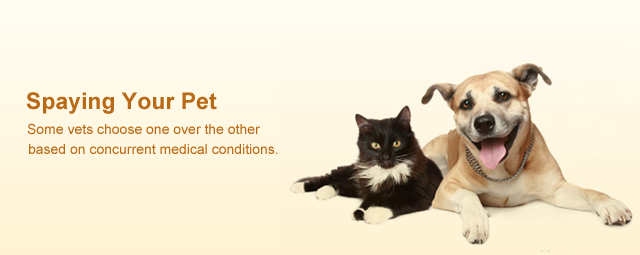Spaying Your Pet
If you have a female pet that you never want to have babies, you’ll need to have her spayed. The technical term for this procedure is an ovariohysterectomy. This involves removing the ovaries and the uterus. Another procedure to stop a pet from reproducing is an ovariectomy. This involves removing just the ovaries and leaving the uterus intact.
How to Choose a Procedure
Both procedures are equally effective in preventing pregnancy. The best procedure to choose is the one that your vet is most comfortable with. Veterinarian colleges in the United States usually teach ovariohysterectomies, while ovariectomies are more common in Europe.
Some vets choose one over the other based on concurrent medical conditions. Stump pyometra occurs when fluid  collects in the remaining uterus and results in a bad infection. It’s been suggested that if the entire uterus is removed, this may be prevented. However, it seems that pyometra results from hormones in the ovarian tissue and that removal of the whole uterus isn’t really necessary. Some have said that ovariectomies will not increase the chances of pyometra over an ovariohysterectomy.
collects in the remaining uterus and results in a bad infection. It’s been suggested that if the entire uterus is removed, this may be prevented. However, it seems that pyometra results from hormones in the ovarian tissue and that removal of the whole uterus isn’t really necessary. Some have said that ovariectomies will not increase the chances of pyometra over an ovariohysterectomy.
Furthermore, although the rates of uterine cancer in dogs and cats are low, some vets like to remove the entire uterus to prevent uterine disease and uterine cancer. Some vets feel that ovariectomies are less risky than ovariohysterectomies because the tubes that transport urine between the kidneys and the bladder are easily damaged. If a ureter is nicked, it could cause life-long medical issues or death for the patient.
Another option is a laparoscopic procedure to spay the animal. This option is minimally invasive and easy to recover from. It only requires small incisions to insert an instrument that cuts and seals the organs. Recovery time is minimal.
Studies have shown that dogs spayed with a laparoscopic procedure exhibit much more activity than dogs that are spayed with other medical procedures. Unfortunately, not as many vets practice this procedure because it’s newer, and older vets have not been trained in this technique.
Spaying your pet is your choice, but it’s a great way to save your pet from some potentially deadly medical problems and to reduce the pet population.






